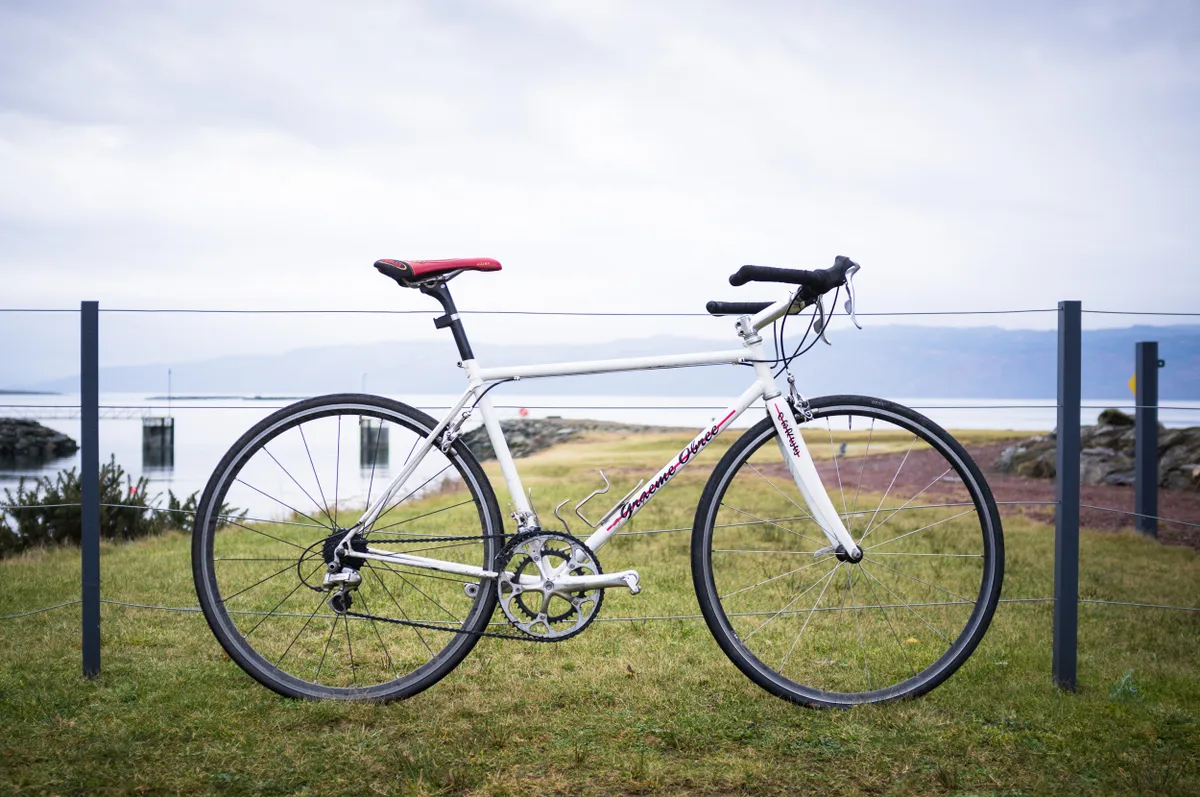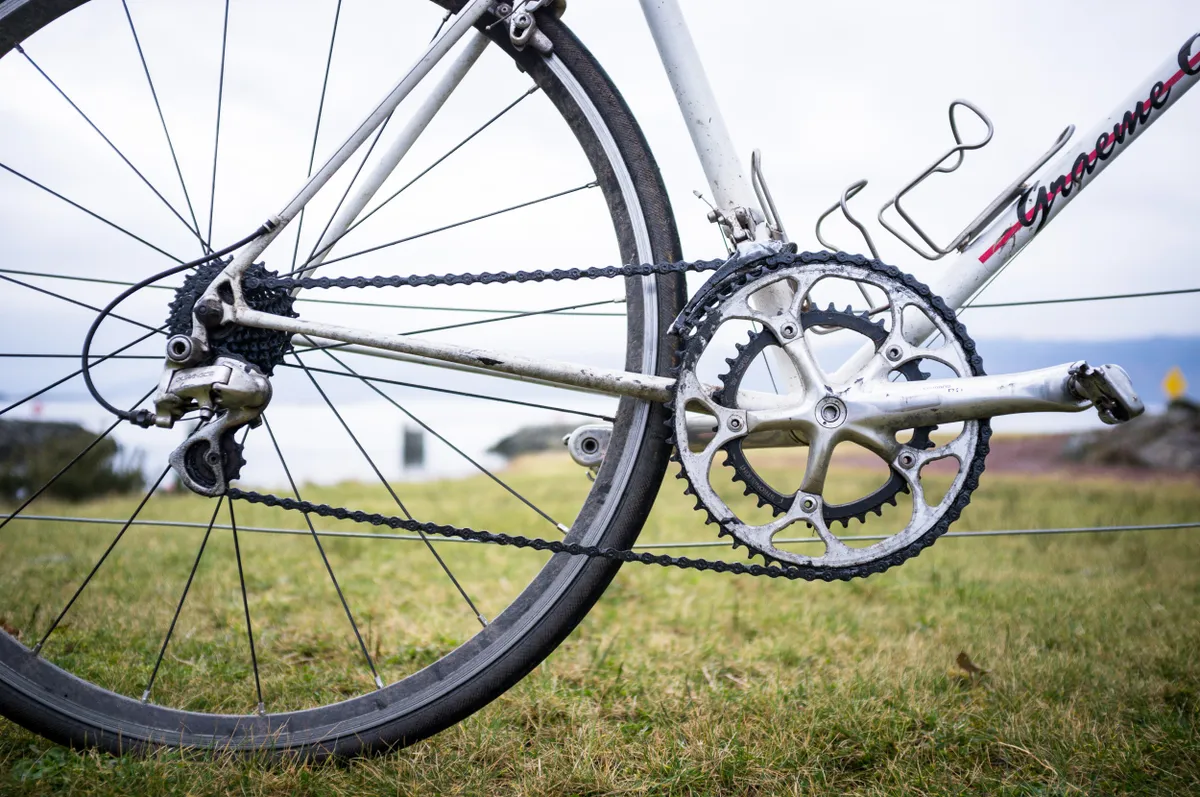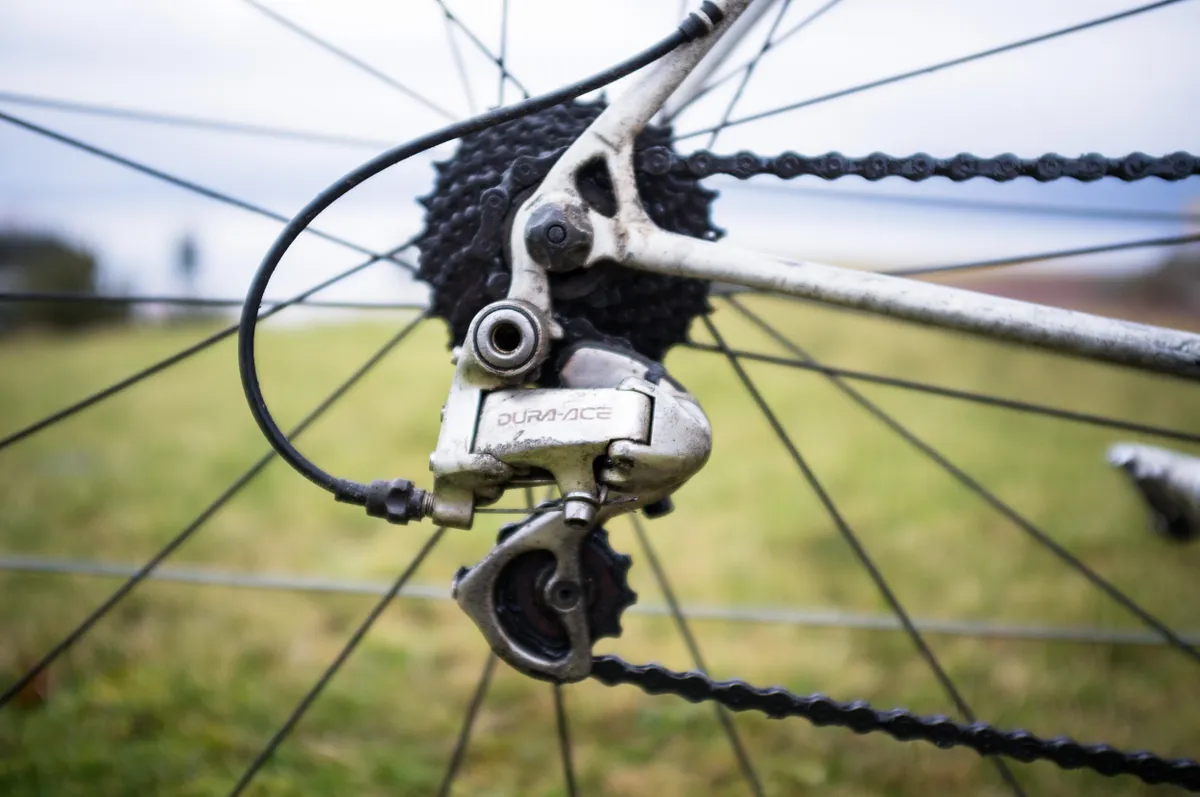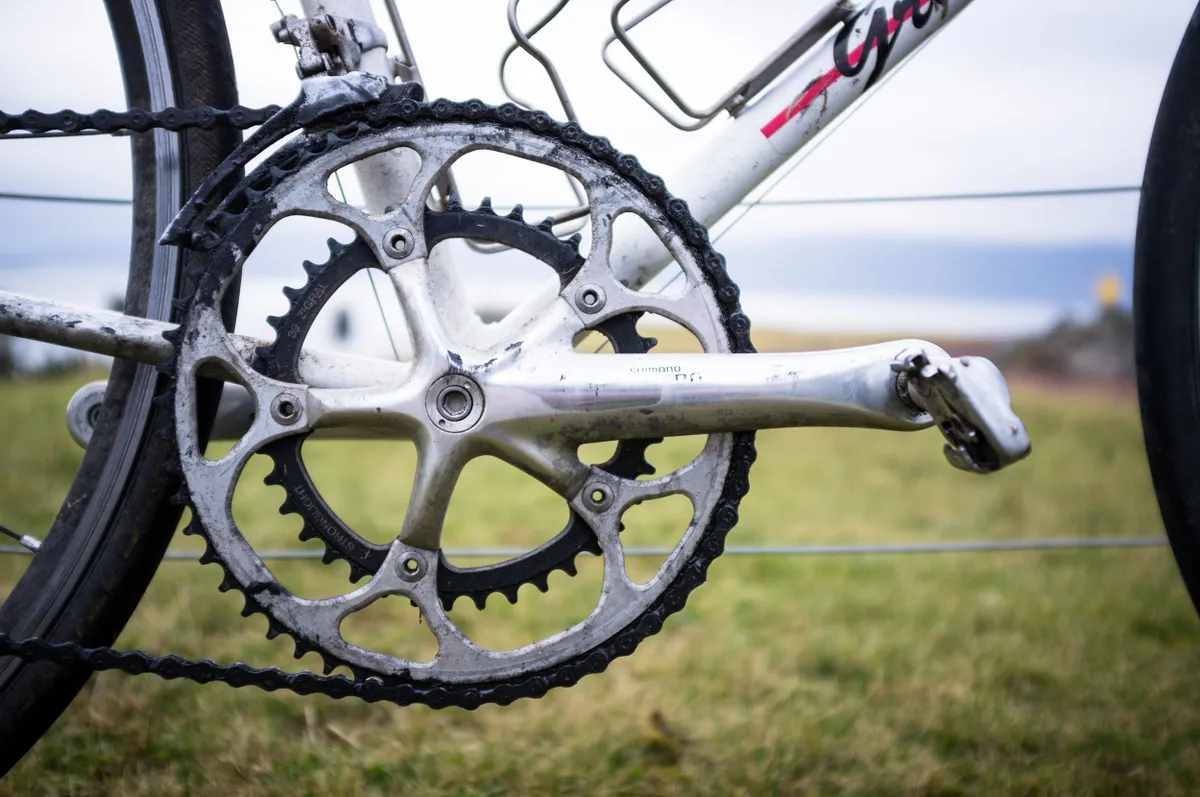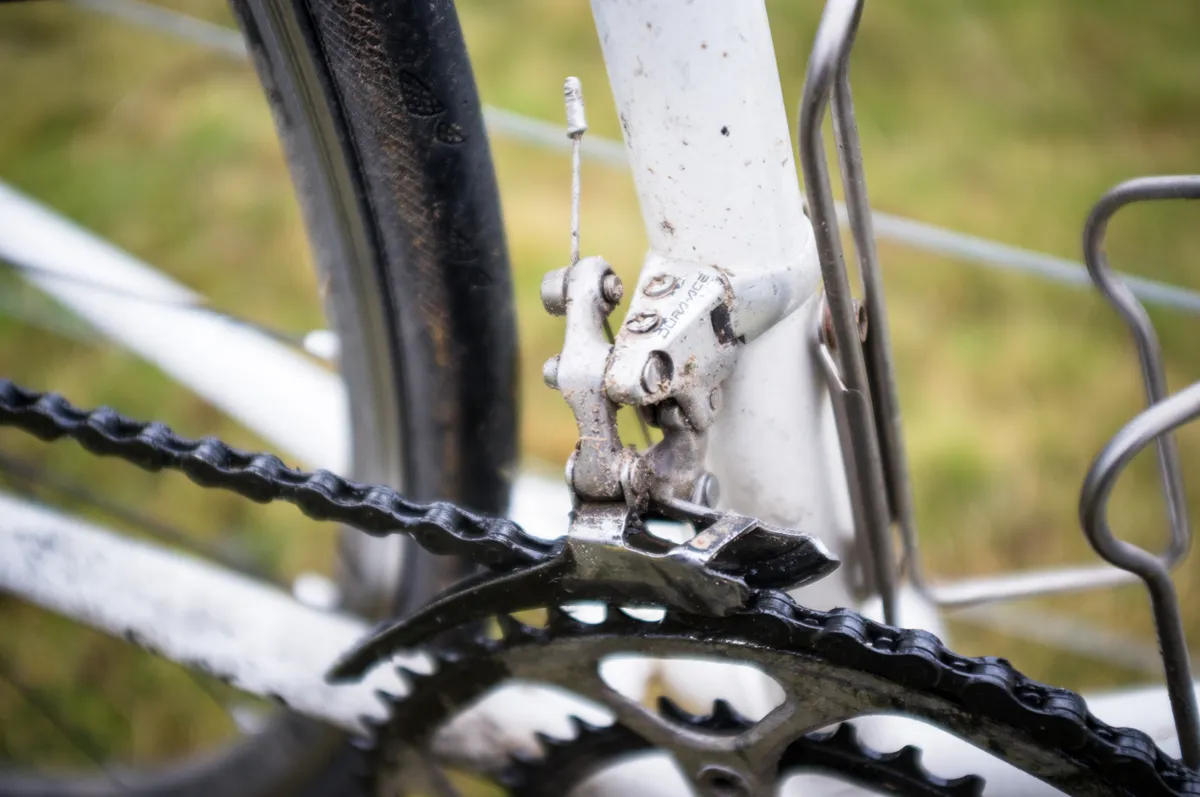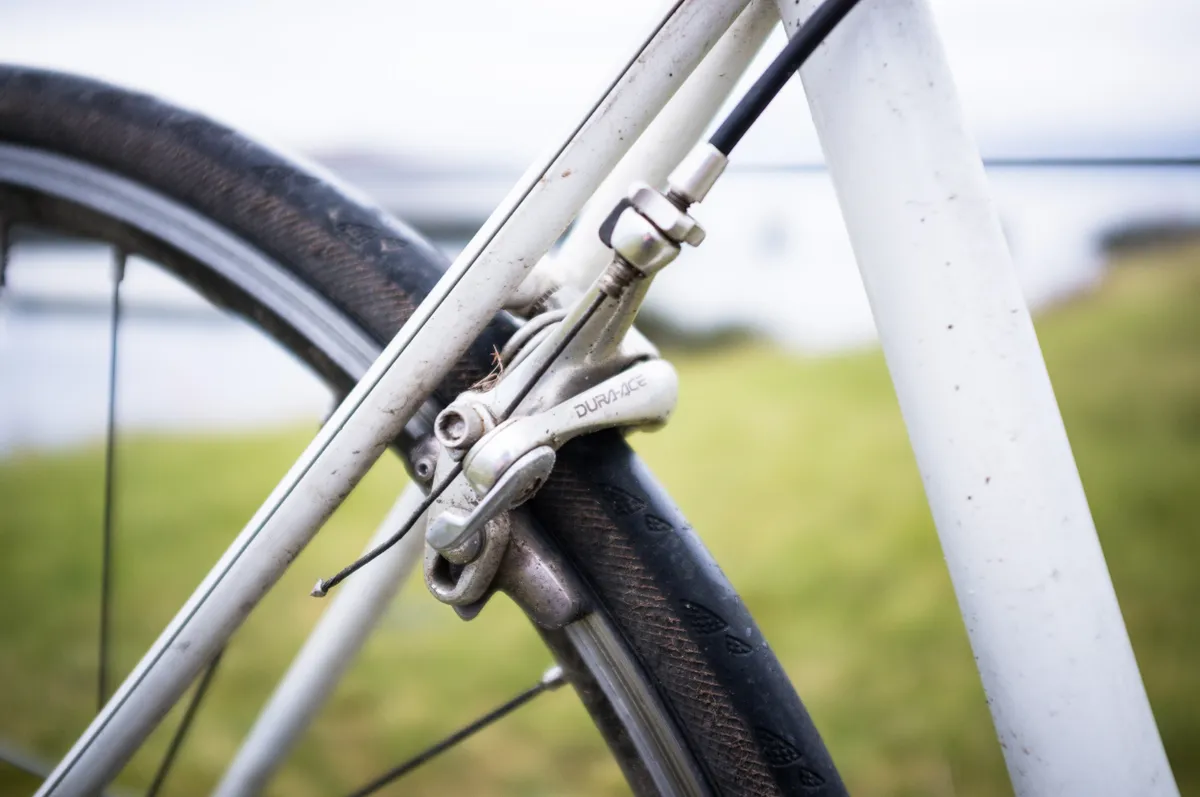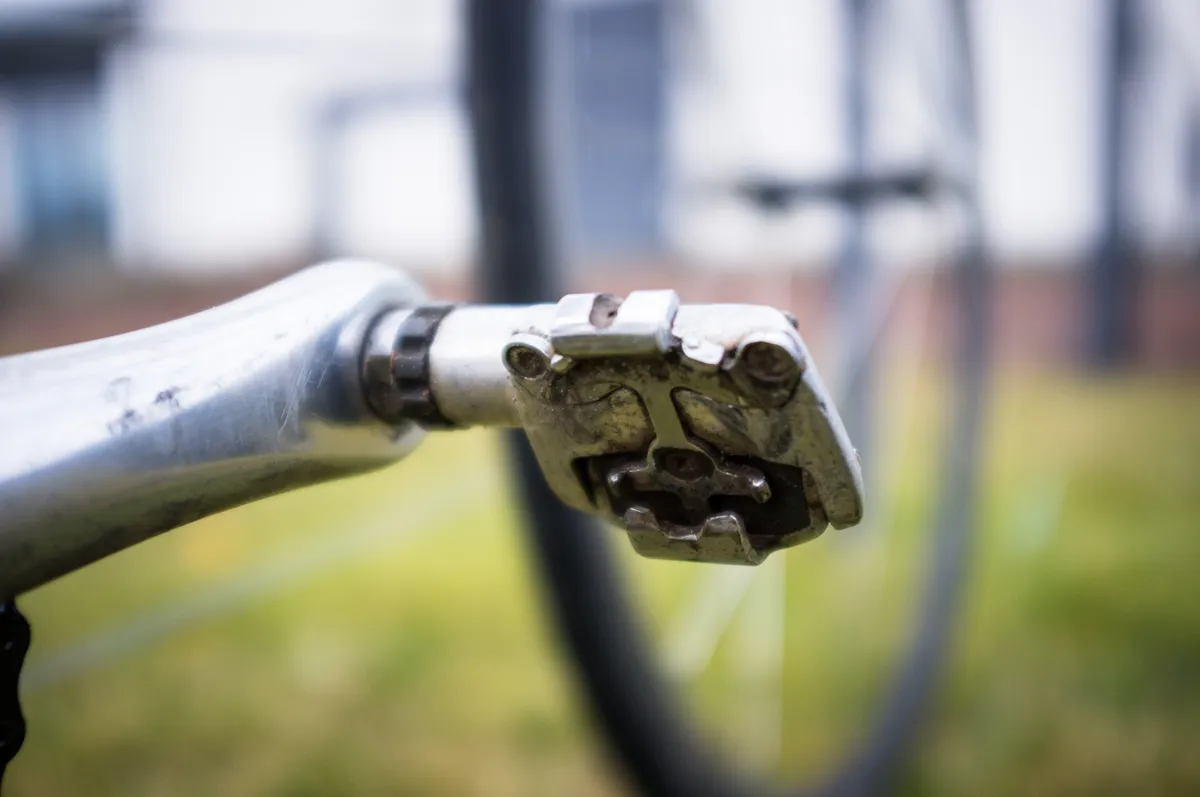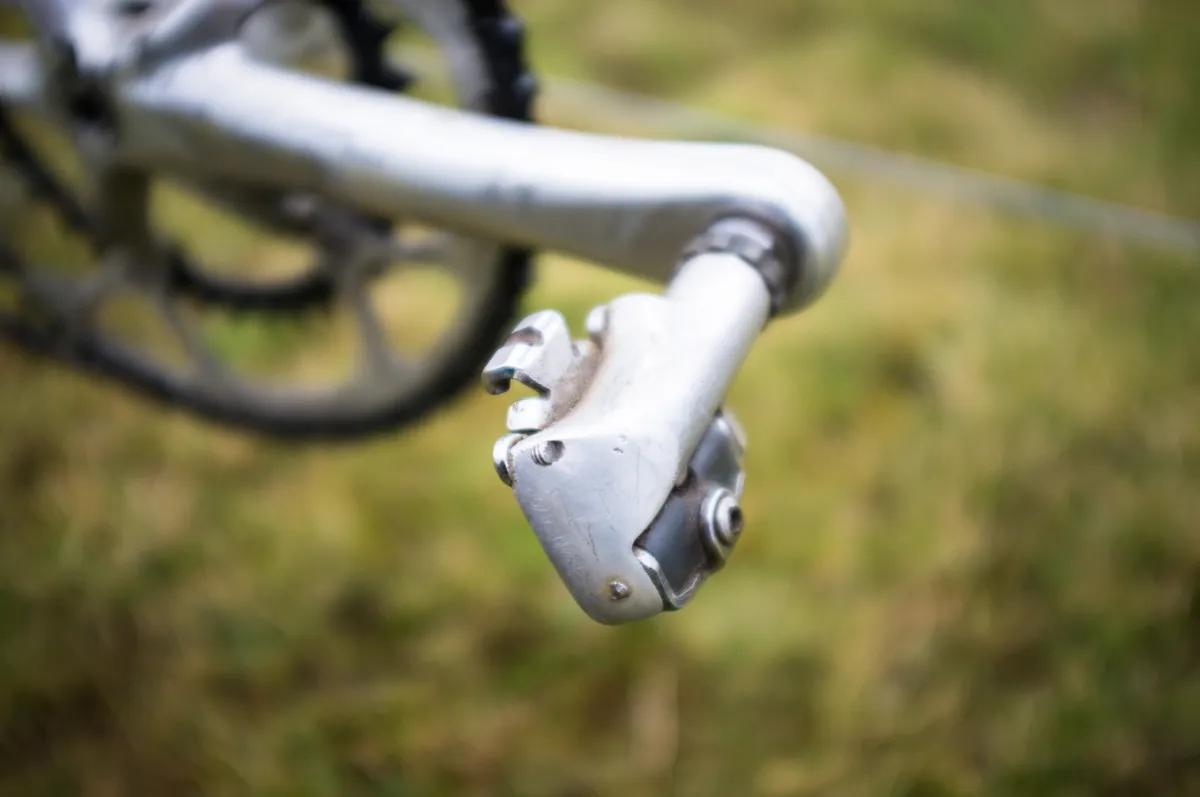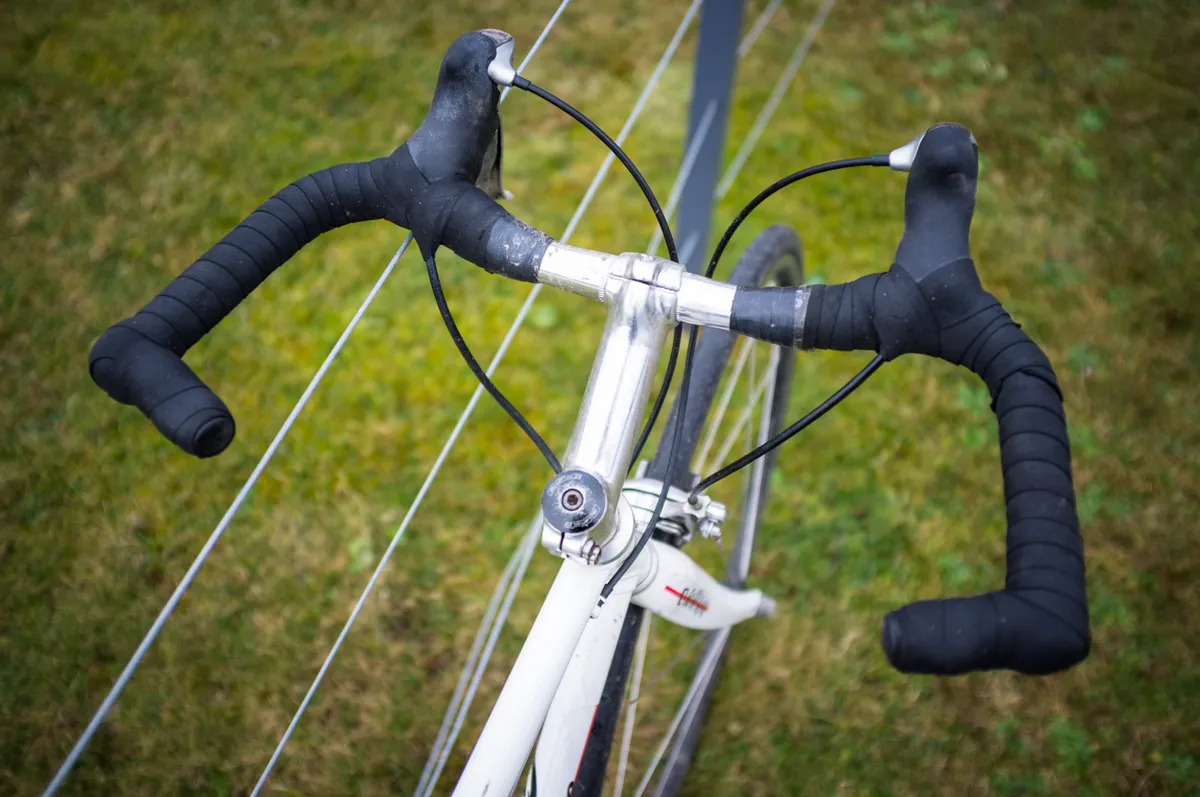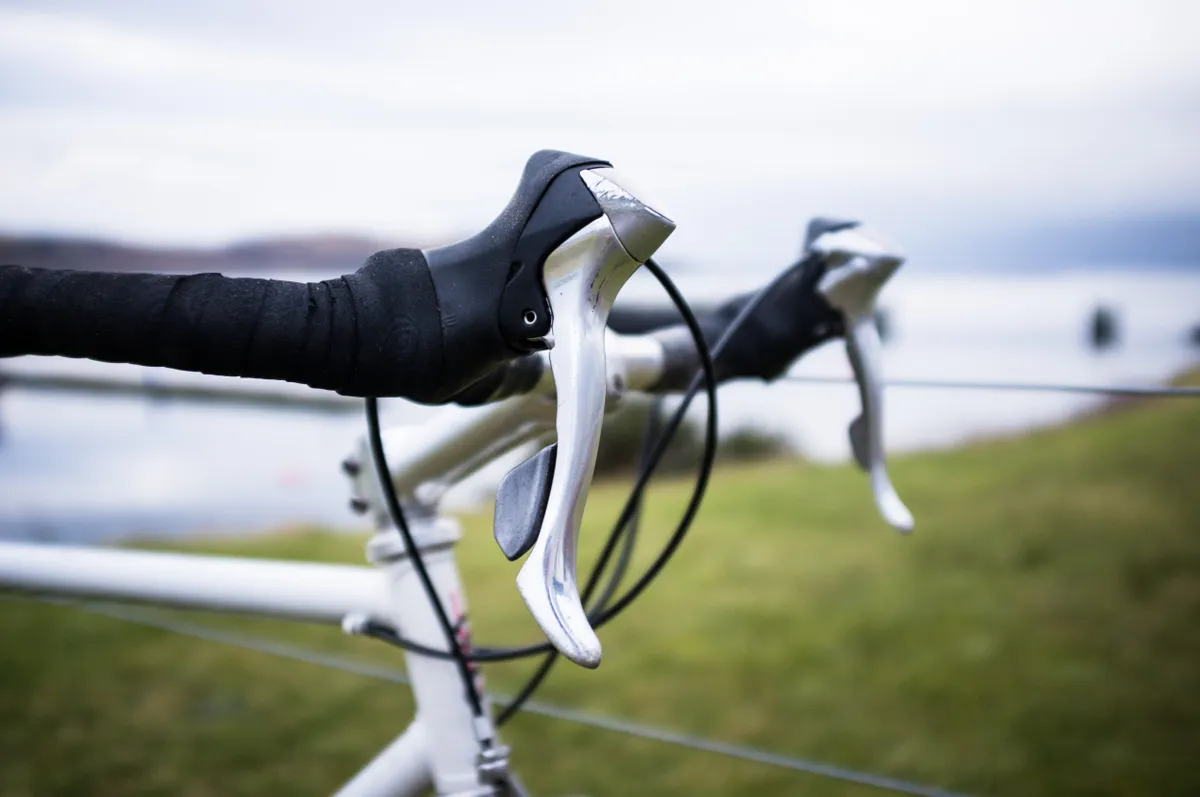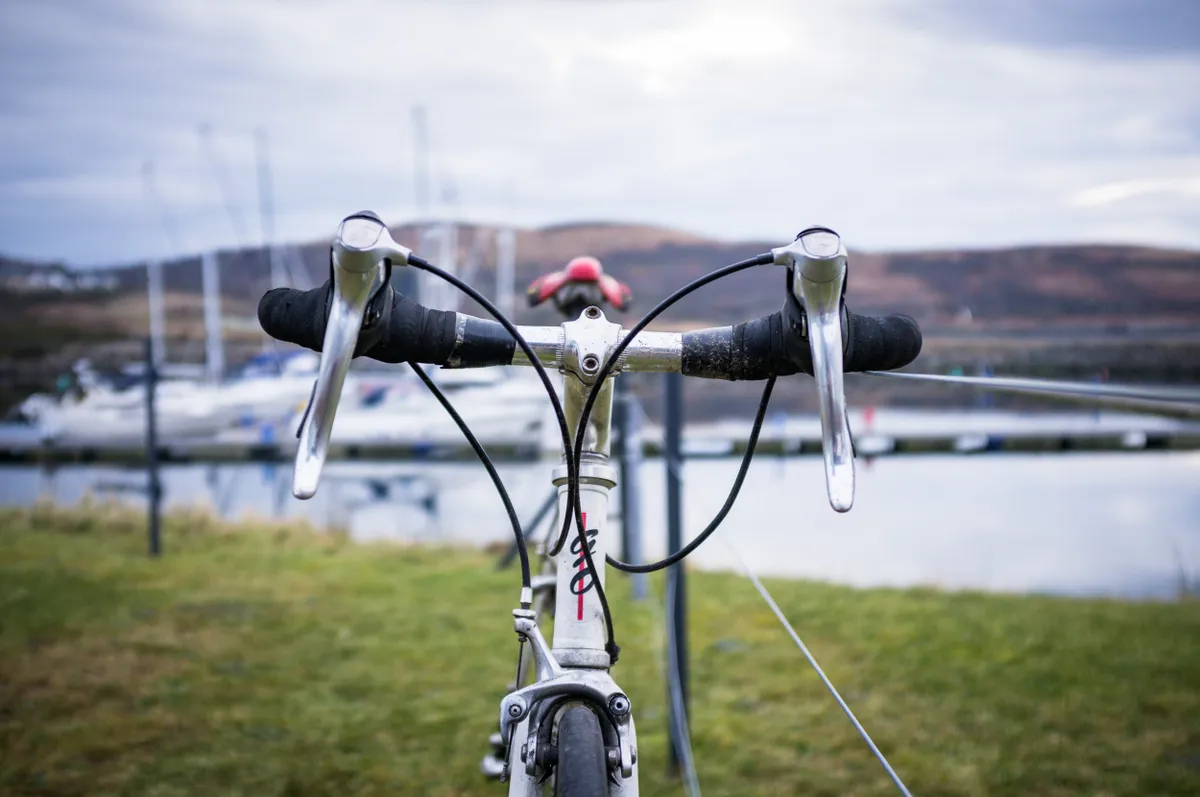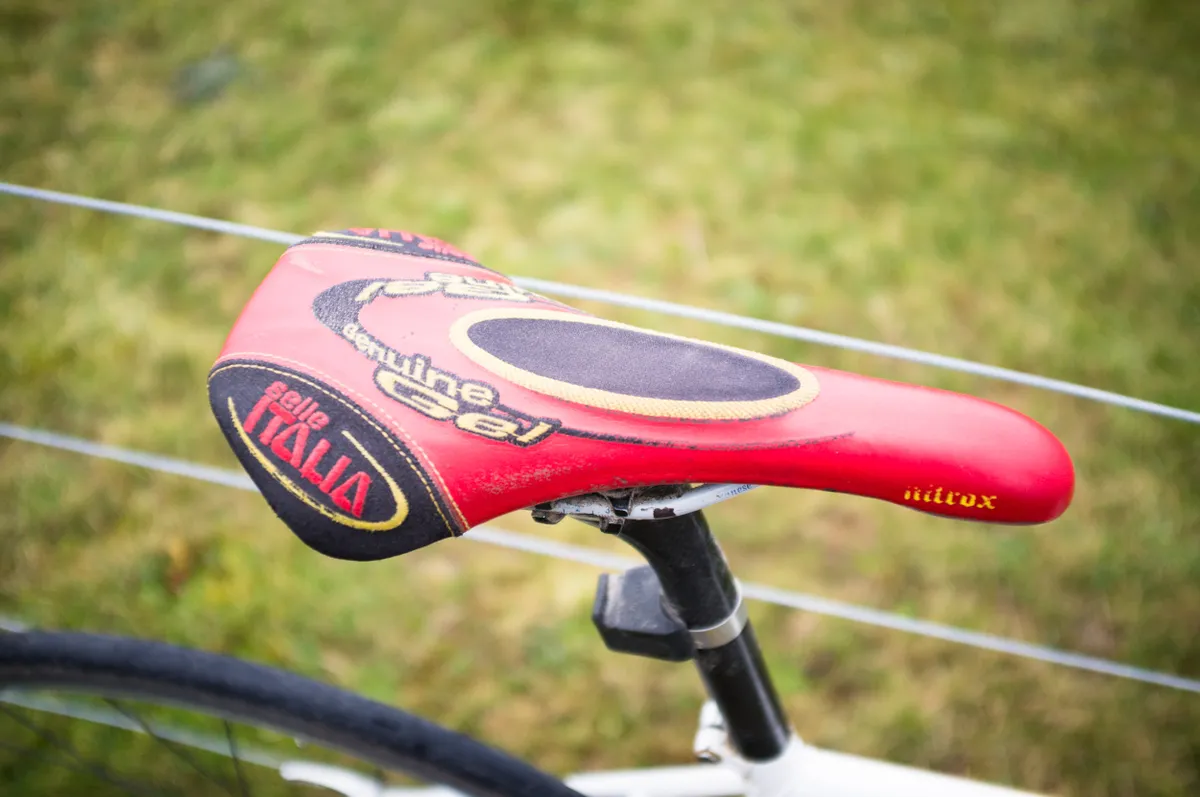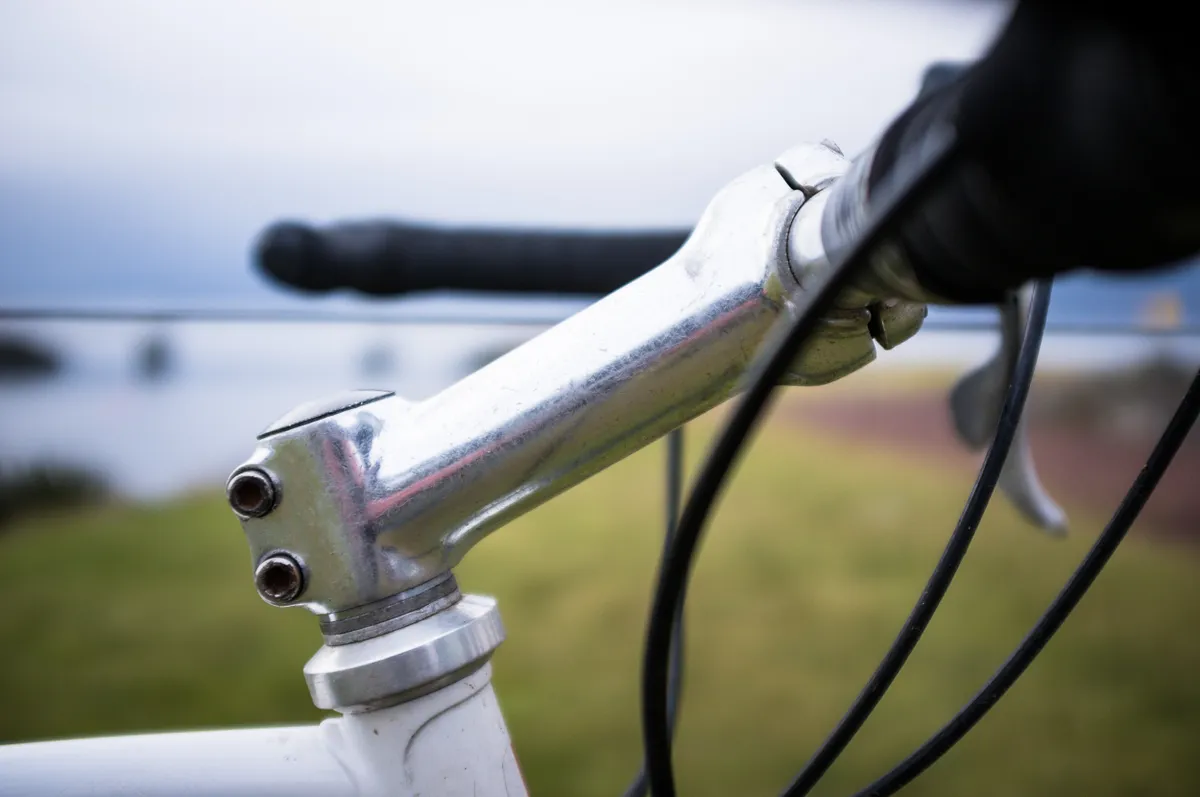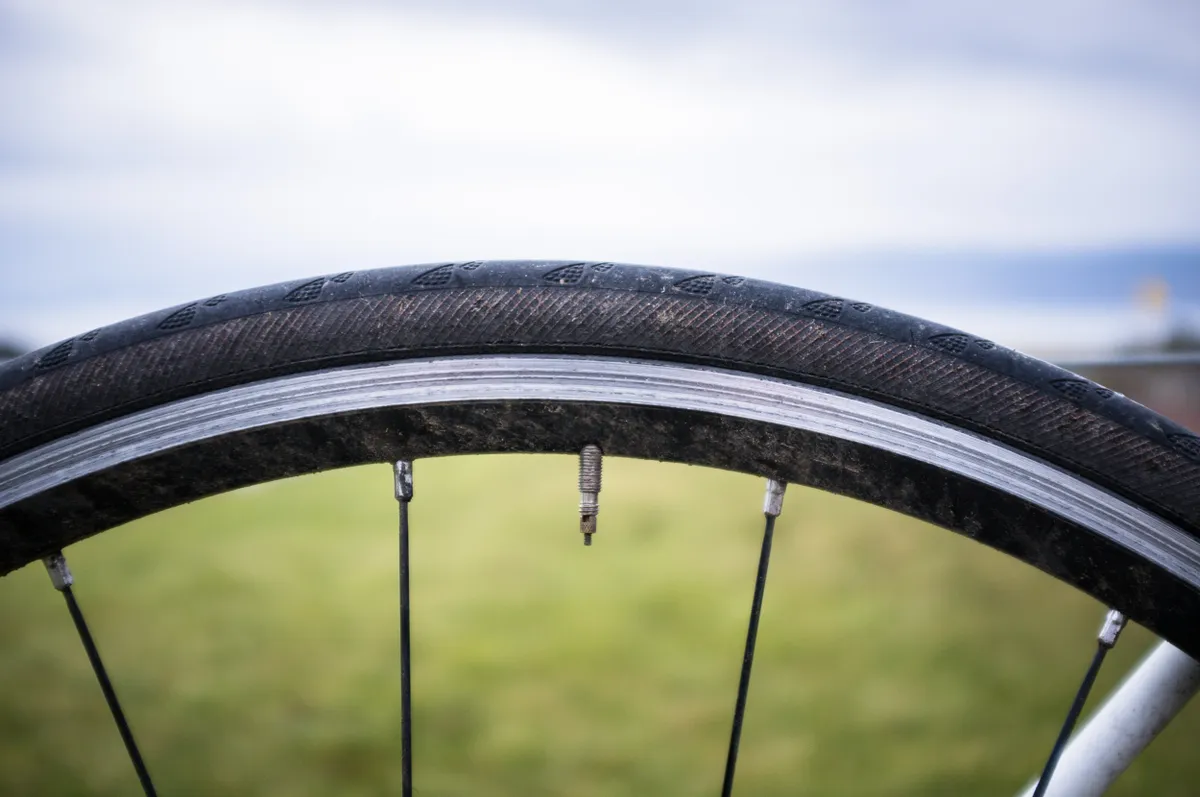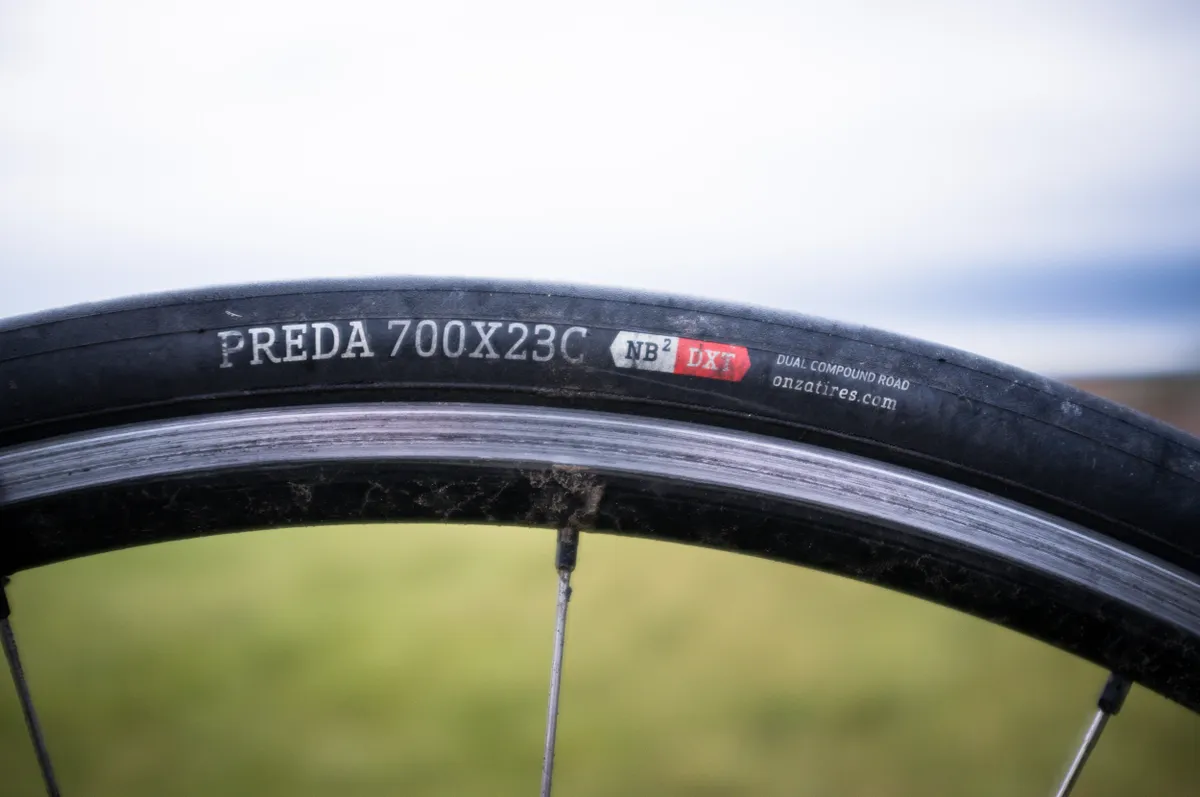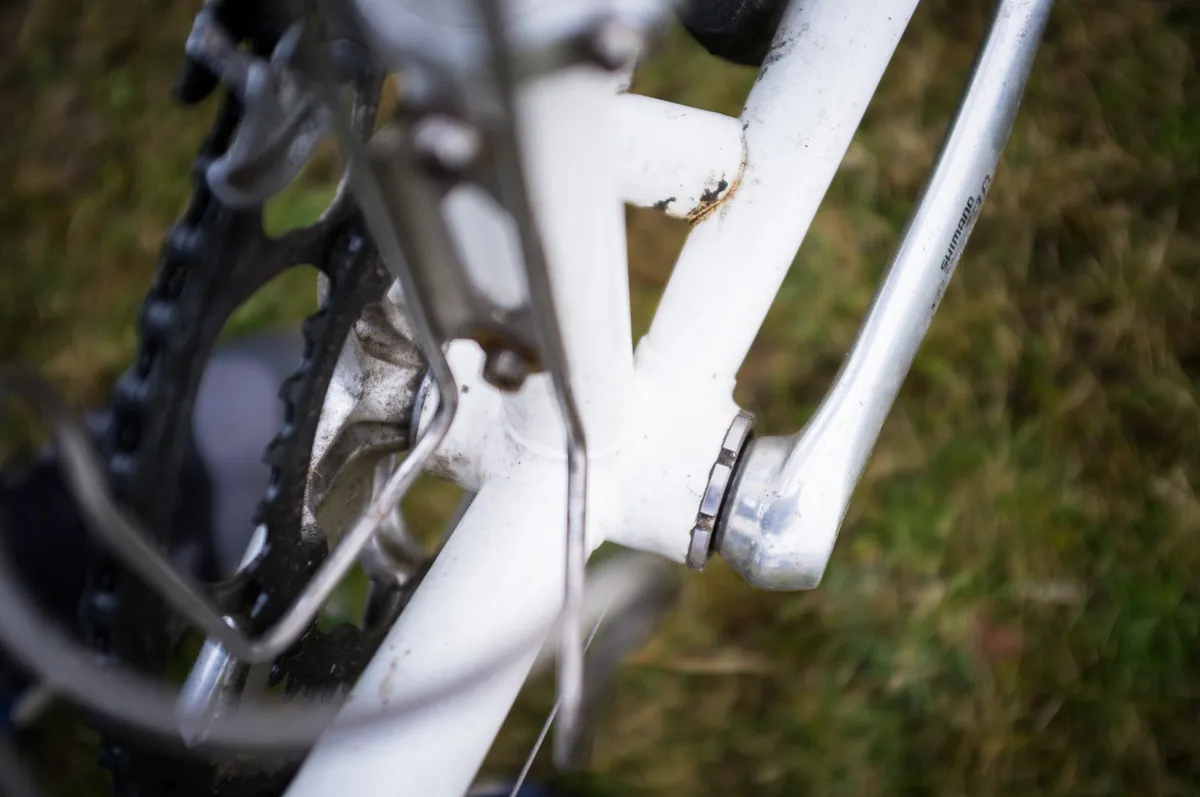At Endura’s recent Hardcore Roadie event, where the Scottish brand launched its new Pro SL bib shorts with customisable fit, I had the chance to ride with Graeme Obree, the former hour record holder and world individual pursuit champion.
He didn't simply ride one of the stock carbon road bikes Cannondale supplied for the event, though, instead he brought a bike of his own.
Made from Reynolds 653 steel, in a classic diamond shape, with an Easton carbon fork and a 9-speed Shimano Dura-Ace 7700 drivetrain, it looks almost traditional at a glance.
A closer look, however, reveals an unusual geometry and handlebar setup that allows Obree to adopt what is essentially a time-trial position, for greater aerodynamic efficiency.
You didn’t think Obree would ride it like a normal road bike, did you? Of course not.
In terms of the geometry, the first thing you're likely to notice is how incredibly long it is. The frame has a 54cm seat tube, but a 60cm top tube and a very long wheelbase. This allows Obree to stretch out his upper body and also promotes stability at high speed.
Meanwhile, the seat angle is around 70 degrees. This flies in the face of the modern time-trial bike design consensus, where seat angles have shifted dramatically towards 75 to 78 degrees in recent years, as riders look to get over the bottom bracket to promote a more open hip angle.
The handlebars are almost in a Porteur style, and Obree has fixed extensions on the bar ends. Those extensions are there so Obree can rest his elbows on them and reach out for the brake levers in front.
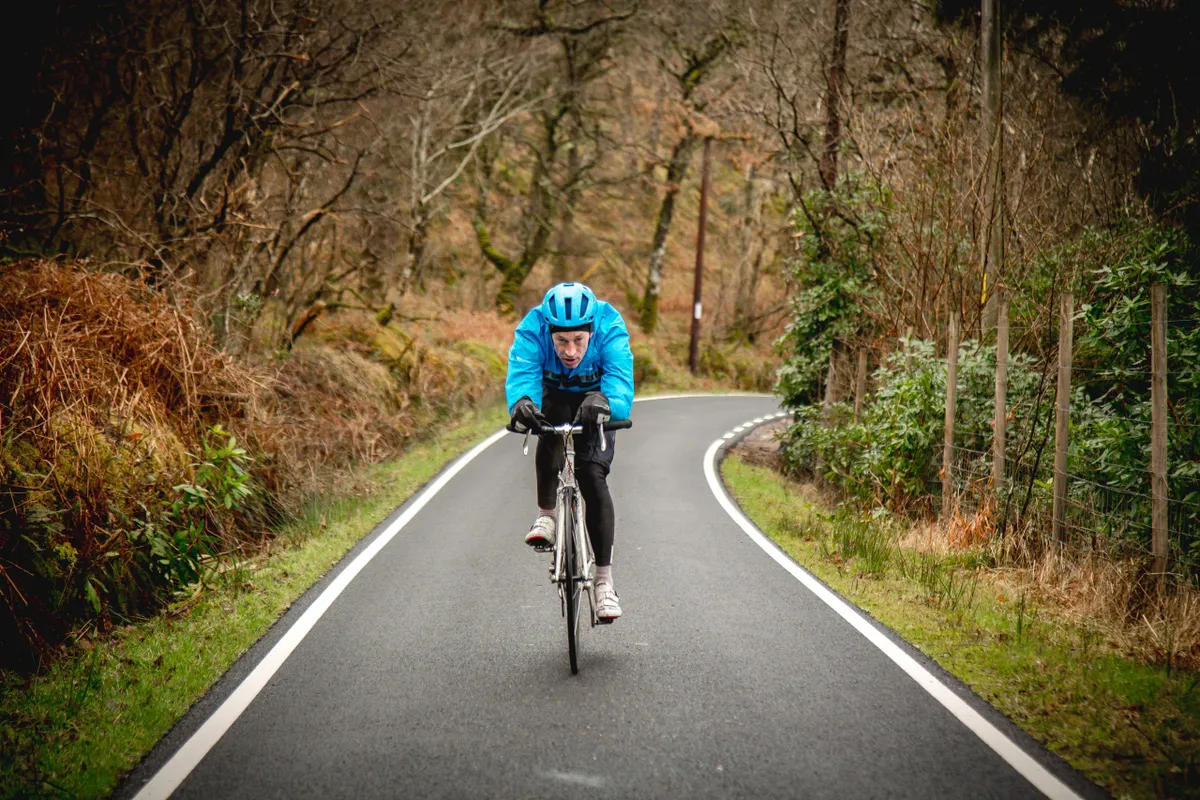
I wasn't able to weigh the complete bike, but Obree said the frame weighs around 1,350g, which is respectably light.
The handlebars aren't the only customised part either; the rear brake is mounted on the inside of the seatstays and the rear derailleur cable routes under the top tube.
The pedals are also very peculiar. They look like Dura-Ace PD-7410 pedals with the front chopped off, but we're not sure. If any retro pedal nerds can identify them, please let us know in the comments below.
The Flying Scotsman
As many of you will be aware, Obree has a long history of building weird and wonderful bikes. He is arguably known as much for his contrarian homemade bicycles and technical innovations as he is for his athletic achievements.
The most famous bike he ever made is surely Old Faithful, which Obree used to break the hour record for the first time in 1993, and to win the individual pursuit at the World Championships in 1993 and 1995.
It was designed to facilitate a more aerodynamic riding position and eschewed the accepted design norms for racing bikes.
Obree would rest his chest directly on the handlebars and tuck his arms in at his sides, reducing his effective frontal area massively.
The bike had all sorts of wild details such as aerofoil tubing, no top tube, shoes that were bonded to the pedals (to prevent Obree pulling a foot out of the pedals) and a super-narrow, 40mm wide bottom bracket in which he placed washing machine bearings.
The UCI would eventually ban the crouch position, leading Obree to develop the 'Superman' position in response.
In 1996, another British time trialling legend by the name of Chris Boardman set an hour record of 56.375km in this position (which is over a kilometre further than the current UCI hour record of 55.089km, set by Victor Campenaerts in 2019), before that position was also banned by the UCI.
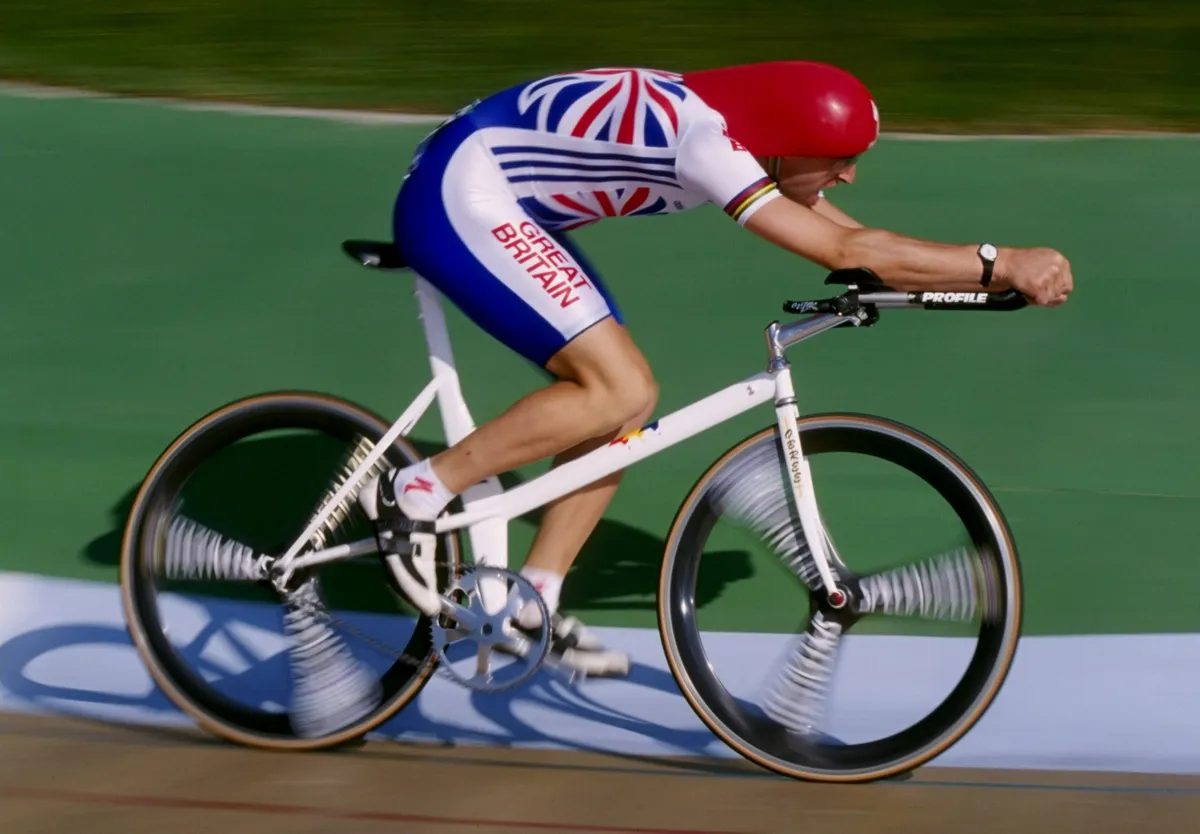
Obree's other machines included a more traditional drop-bar track bike for when he was considering another attempt at the Athlete’s Hour record in 2009, a time trial machine with a monstrous 67t 1× drivetrain, and ‘The Beastie’, which was designed as part of a bid to break the human-powered land speed record in 2012.
Naturally, this bike isn’t UCI legal (because of all the custom modifications), but who cares, this isn’t a bike built to be used in the professional peloton, it’s a bike built to serve Obree’s unique needs and ideas perfectly.
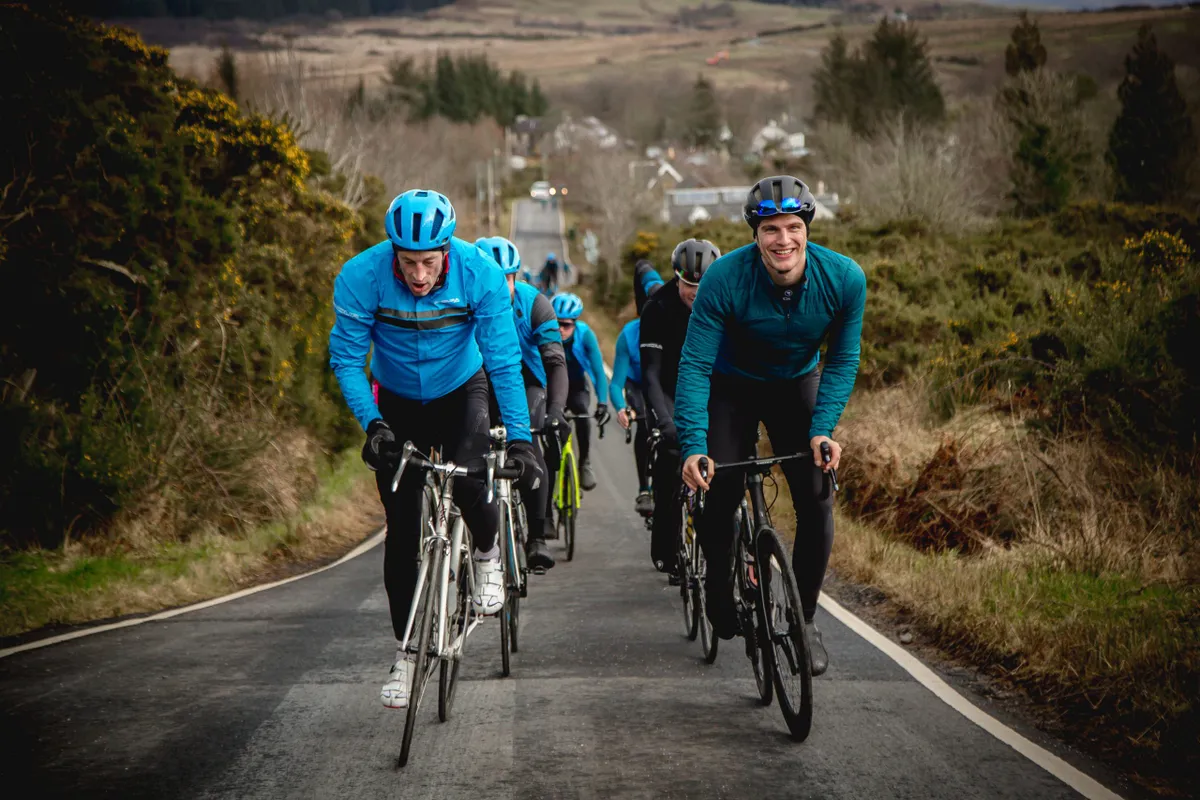
Riding with Obree was as fascinating as you'd expect. He clearly views the world through a completely different lens to most people. The riding chat would jump from talking about the merits of steel over carbon to string theory and the nature of time in a matter of seconds.
He is also still incredibly strong. While I was grateful for climbing gears fit for the Monte Zoncolan, Obree had 55/39t chainrings and an 11-25t cassette. The steep hills of the Scottish Highlands didn't seem to cause him too much bother.
It's perhaps unfair that Obree's athletic ability has been somewhat overlooked because his bikes have commanded so much of the attention, but you don't break an hour record set by the great Francesco Moser unless you've got an enormous engine, no matter what bike you're riding.
You can check out all the details of Obree’s bike in the gallery above and the full specification is listed below.
We also sat down with Obree after the ride to record an upcoming episode of the BikeRadar Podcast, so look out for that or subscribe via iTunes, Spotify or all the other usual podcast services.
What do you think the big road bike manufacturers could learn from custom builders like Obree? Leave a comment below and let us know what you think of this bike.
Greame Obree’s custom steel road bike full specifications
- Frame: Graeme Obree custom Reynolds 653 steel
- Fork: Easton carbon
- Front brake: Shimano Dura-Ace 7700
- Rear brake: Shimano Dura-Ace 7700
- Brake/shift levers: Shimano Dura-Ace 7700
- Front derailleur: Shimano Dura-Ace 7700
- Rear derailleur: Shimano Dura-Ace 7700
- Cassette: Shimano Dura-Ace 7700 11-25
- Chain: Unknown, 9-speed
- Crankset: Shimano Ultegra 6500
- Chainrings: 55/39t
- Wheelset: Unknown, “whatever I had lying about”
- Tyres: Front Onza Preda 23mm / Rear Continental Gatorskin 23mm
- Handlebar: Unknown alloy Porteur style with custom modifications
- Stem: 120mm, alloy, brand unknown
- Tape/grips: Black cork handlebar tape
- Pedals: Shimano, possibly modified Dura-Ace PD-7410 SPD
- Saddle: Selle Italia Nitrox
- Seatpost: 27.2mm carbon, unknown brand
- Other accessories: Blackburn alloy bottle cages
